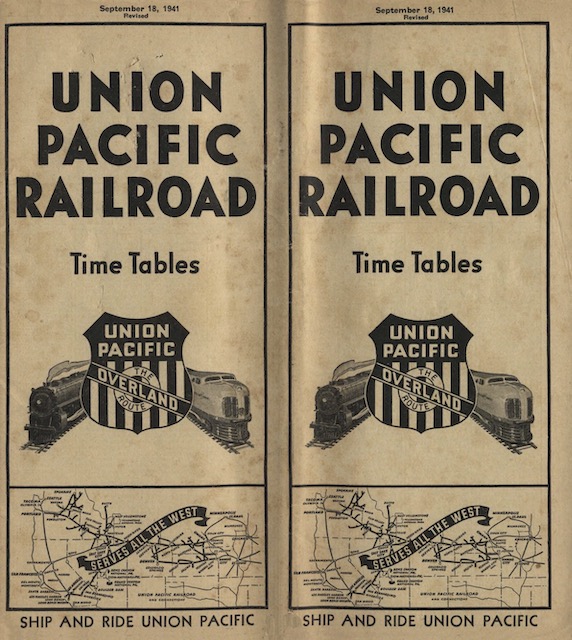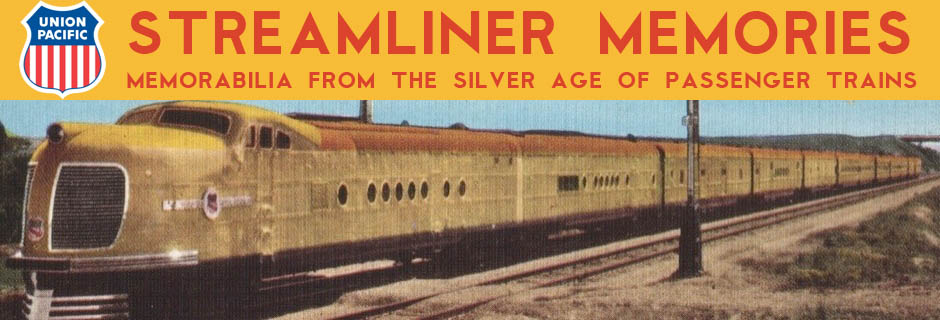Here’s a timetable that actually puts the title cover on the front instead of the back. We’ve previously seen a June 1939 Union Pacific timetable (also contributed by Tim Zukas) that also put the title on the front, so UP must have switched to that format sometime between 1937 and 1939.
 Click image to download a 55.6-MB PDF of this timetable. Thanks to Tim Zukas for providing the scans of this timetable.
Click image to download a 55.6-MB PDF of this timetable. Thanks to Tim Zukas for providing the scans of this timetable.
The full-page ad that is on the back cover of this timetable promotes Sun Valley as a place to “ski, skate, or swim.” Union Pacific had two hotels at Sun Valley, the upscale Sun Valley Lodge and the more economical Challenger Inn. This timetable says that rooms with a private bath were $9 for one, $12 for two, at the lodge but $7.50 for one and $10 for two at the Challenger Inn. Multiply by slightly more than 20 to get today’s dollars, meaning a room for two effectively cost at least $40 more at the lodge than at the inn, but at $200 a night even the inn was expensive.
The timetables presented here in the last few days were 48 pages long, but this one was 64 (as was the June 1939 edition). This is due to Union Pacific introducing a new format. The previous timetables began with condensed schedules, then equipment lists, then detailed timetables that listed all mainline trains from Chicago and St. Louis to Denver, Portland, San Francisco, and Los Angeles on one set of pages. This could easily be confusing.
Following condensed streamliner schedules, the new format had a full page just for trains from Chicago to Los Angeles, including equipment, and another page for Los Angeles to Chicago. This was repeated for San Francisco and Portland, then St. Louis-Los Angeles, St. Louis-San Francisco, and St. Louis-Portland. Trains in both directions between Chicago-Denver and St. Louis-Denver received one page each. More pages were dedicated to Chicago/St. Louis-Spokane, trains to Sun Valley, and trains to Yellowstone.
The detailed timetables were still found in the back, but these destination-oriented tables were a lot easier to read albeit by taking more space. UP would continue to use this new format at least through 1970.
